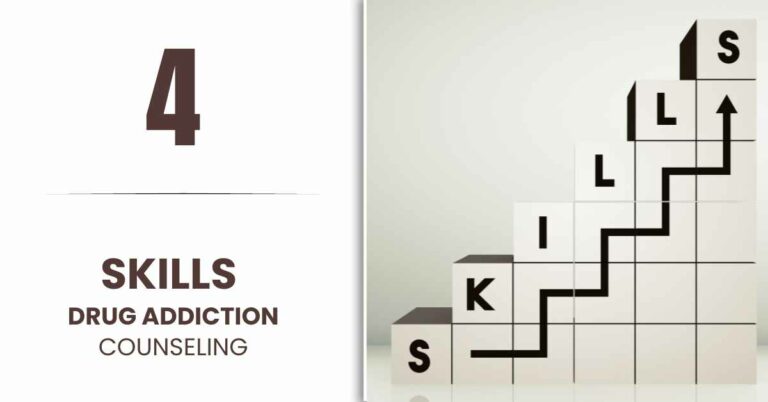
1 Simple Way to Detox Mind & Body
Discover the transformative power of viewing detox not just as a physical cleanse but as a holistic approach to living, emphasizing the profound connection between mind, body, and environment.

In order to help you understand the difference between skills and techniques, I would like first to discuss “techniques”.
A technique is a way of accomplishing a task in a manner that is not immediately obvious or straight forward. An example of technique might be the way you cook fried rice. While many people can cook fried rice, each of the steps necessary to accomplish making superior fried rice is not immediately obvious.
Many of the techniques that we will teach during this workshop relate to prevention of relapse. These will include coping with cravings, refusal skills, coping with emotions, stress management and others. We will discuss and learn about each of the steps necessary to incorporate these techniques.
To master a technique, one needs to have the requisite skills to perform particular actions. Using our fried rice example, one must know how to handle the rice during preparation and cooking, and how to prepare and add the vegetables. Without these skills the rice will not be cooked to perfection, regardless of one’s following a prescribed technique (for example, as outlined in a cook book). Having these special skills enables one to accomplish a task with skilled technique.
We can think of the technique as the recipe, or set of instructions and the skills as one’s ability to perform the tasks outlined in the recipe (the dish could be anything, such as problem solving, time management, coping with cravings etc.). Even with consistent recipes, some cooks (counselors) might be more successful than others because their skills (chopping, stirring, and cooking) are better. How skilled one is at applying a technique depends strongly on how much they practice.
Drug addiction counselors use a variety of counseling skills that will be discussed in this unit. We have already discussed how drug addiction counseling is a purposeful intervention aimed at changing behaviors of clients. Many of the techniques that we will learn during this counseling workshop are aimed at teaching the clients ways to prevent drug relapse. These techniques will be the subject of later unit in the workshop.
This unit will be divided into two parts. There are many different counseling skills and you will need to practice each one in order to master their application. It is only through thorough and regular practice that you will enhance your ability to use these skills as a routine part of counseling. Each skill has a purposeful role to assist both counselors and clients.
We will discuss each of these in detail.
In attending, you demonstrate you are paying attention to your client by listening to the verbal content of the conversation and noting non-verbal cues. You can communicate back with words like “yes” or by repeating key words. It helps clients to feel relaxed and comfortable and express their ideas freely. Nodding your head tells your clients: “Yes, I understand and am listening”. Observing your clients carefully will allow you to see many non-verbal cues that may tell you whether what they say reflects what they are feeling in their head and hearts.
You should remember that counseling is mostly listening. You are primarily listening and looking; you are not primarily speaking.
You should try this with your family or friends; try not showing interest in what they are saying and then show interest. See what the reaction is. The difference depends on how engaged you are in the conversation. People react substantially to non-verbal cues. By showing you are really attending, you will help your clients feel relaxed and comfortable and enable them to express their ideas and feelings freely; they will trust you more.
Attending also helps the counselor to obtain accurate information about the client through observation (i.e. by noting physical cues, such as whether the client is in withdrawal, pain etc.).
Body language also indicates clients’ preparedness for change. For instance, the client may show keen interest in what you are talking about or, by contrast, may look completely disinterested.
Open-ended questions are questions that allow the client to answer in multiple different ways, and in great detail. You cannot predict the answers to open-ended questions, nor understand their dimension, until your client provides answers.
Closed questions lead to a predictable range of answers. They are answered in particular categories. For example, a “yes or no” question is a closed question with only two possible answers. You have limited choices to answer a yes or no question. There are many examples of categorical type questions and answers. They include things such as colors, age, speed, numbers, etc.
Paraphrasing can be a very useful skill for enabling your client to know that you have heard what he/she has said. It also helps you to summarize complicated information in a way that you can both use to consider what to do next.
Paraphrasing really assists your clients to think about an issue that you identify as important because you “replay” their words back. They are thinking about what they’ve just said. Key statements will have a much bigger impact in a counseling session if clients can say them to themselves because they spotlight specific issues that need to be dealt with. To open a paraphrasing statement, you might say: “What I hear you saying is…”
To understand the difference between paraphrasing and summarizing, consider an example where you and your friend go to see a movie. During the movie, your friend does not hear what one of the actors said and turns to you and asks “What did he just say?” You would then answer, ”He said…” You might not say what the actor said word for-word, but you will likely repeat it in such a way that the meaning is not lost and as accurately as possible.
This is in contrast to summarizing. Using the same example, you might come home that night and your roommate might ask you what the movie was about. You might provide an overview that addresses the plot and main actions in the film – in essence, a summary – but certainly not something that attempts to repeat all dialogue as accurately as possible.
Summarizing helps counselors to ensure continuity in the direction of the session. It also provides an opportunity to bring order to the issues discussed in the session. Sometimes the information a client gives covers numerous topics and points of view but it is not necessarily in a logical order. You can link your summary to another open- ended question to refocus your client back to the issue you want to discuss. Summarizing can also help you terminate the session in a logical way or focus on one issue while acknowledging the existence of other concerns.
Is summarizing helpful for the client as well?
Definitely! Summarizing creates an opportunity for the client to clarify meaning, to realize whether or not the counselor understands what he/she is saying, and to obtain a sense of movement and progress in his/her discussion with the counselor.
Periodic summaries will help link together what has been discussed, will show the client that you have been listening, and will help to point out issues of ambivalence.
You can also prompt for more information and provide an opportunity for clients to hear their own thinking.
Summarizing can highlight ambivalence by linking the negatives and the positives of drug use in one statement. For example, you could say, “ On the one hand….., and on the other hand….”.
A summary at the end of the session will help you to pull together clearly and succinctly what has transpired during the session.
Always ask yourself:
Summarizing helps your client to leave thinking, “OK. I am now clear about what I am thinking and I know what I am going to do.”
In empathizing, you share your understanding of the client’s point of view. Reflective listening can assist this process. You listen to the client’s words and also identify with their emotions, but remember to avoid being emotionally engaged. Reflective listening helps you to link a client’s emotions to their thoughts or behaviors. For example, you might say, “You feel (add the feeling)…because of… (add the experience or behavior).” You can also bring to the surface feelings that are hidden.
Don’t use it too often as it may look as if you are being superficial and insincere. However, it does show that you are really listening and that you understand what the client is thinking and feeling.
Sometimes, people can say things that are complicated and not easy to understand. In those cases, reflective listening can be very helpful. You can say something like, “What I’ve heard you saying is ……., is that right?” or “Let me summarize what you have just said to make sure that I understand it correctly. What I hear you saying is….”
This approach assists by suggesting that you are not completely confident that you heard what the client said and you’re just making sure. It also shows that you are actively listening; you are thinking about what your client is saying and you are not just passively listening. Usually, clients will be more willing to discuss if they see you are listening.
Reflective listening involves linking emotions to thoughts and behaviors. This is different from attending, where you intentionally demonstrate through verbal and non- verbal cues that you are thoughtfully listening to what your clients are saying.
Reflection of feelings helps the client to realize his experiences are heard and understood by the counselor and to learn that feelings and behaviors are connected. By using reflective listening, you are not pushing clients toward a particular outcome. Reflection will often bring out additional information regarding what clients really feel about their situation. Particularly in the area of relapse, drug users often do not realize that thoughts and emotions are connected to behaviors; they act as if they are unrelated. In fact, thoughts and feelings have a lot to do with our behaviors.
Like summarizing, reflective listening helps counselors to check whether or not they accurately understand what the client is experiencing, and identifies problem areas without pushing clients. This is a way of checking whether or not you have understood what is really going on in your client’s life.
The client provides more information about issues that you feel are important, but you feel that he has not provided enough detail. Probing is a way of getting to the heart of issues around which it will be effective to develop relapse prevention strategies. It is also a way of designating specific issues as important by nature of your asking for more information. Probing should be used to discuss issues that you feel are particularly important.
Counselors have considerable influence in the direction that a counseling session goes based on the kinds of probes they use to lead a discussion. Hence, the session will be influenced by the counselor’s and the client’s views. Whenever you ask a question, you will be asking about what you want to know and not necessarily what the client wants to tell you. Your questions “lead” or direct clients. Probing can help focus a client’s attention. At times you may need to influence the direction of the exploration.
In general, probes are interventions that increase counselor’s control over both the process and content of a session. For this reason, they should be used sparingly and with care, particularly in the early stages of counseling.
The probing skills are:
This is one of the most interesting skills used in counseling and one that is probably the most challenging for most counselors.
If you don’t speak during a conversation, how long is it before one of you feels the urge to say something? Most people will wait for a maximum of 30 seconds before breaking the silence when in conversation with someone. But I want to remind you that counseling is not just a conversation. Counseling has a purpose. There will come a moment in the session when your clients will say something that is critical and difficult, and you can see that they are uncertain about taking the next step. They may not say anything at all. In a conversation, after 30 seconds, you are going to feel pressure to say something, anything, to fill the silence, because the pressure from the silence can be overwhelming. But while you are thinking those thoughts, your client may be thinking about what he/she has just said. His/her thoughts may just be starting to sink in. What your client has said may have much more impact because of that silence.
When combined with attending skills, silence can serve to encourage your clients to continue sharing. The silence can help them lead themselves to the next step. They will be the ones to resume the session. They will be the ones who think about the connection, rather than you alone. They might have greater insight into what they’ve just said because often people don’t think carefully about their words until they have time to think about them.
Silence is the skill you use for big, deep moments, when your client has an insight or says something that is very emotional. In addition to being a time when things really sink in, it can also dissuade him/her from moving onto more comfortable issues which may distract him/her from confronting the main issues.
Silence is not something you use for small things. If silence is used on a trivial issue, the client may be confused about your intention. He/she may think you have stopped listening to him/her or that the counseling session is finished because there is no apparent link to the next step.
The other skills that you will need to become an effective counselor include:
It is critical to help your client develop confidence in his/her self-efficacy. Clients who are confident in their self-efficacy have the confidence that they can succeed on their own. People are more inclined to take on a task they believe they can achieve. They generally avoid tasks when confidence in their self-efficacy is low. Many drug users lack confidence in their ability to do things. When you express confidence in them to undertake tasks or fulfill their goals, it enhances their sense of self-efficacy and gives them energy and enthusiasm to move forward with a plan.
But remember, in encouraging your clients to be self-efficacious, you need to be realistic. Given unrealistic expectations, your clients may overestimate their ability to complete tasks, which can lead to significant harm or disappointment. In building self- efficacy among your clients, you should also provide support for them to undertake tasks successfully. Commenting in a positive way on what they have achieved is likely to build their confidence and increase the likelihood they will attempt more ambitious goals.
Showing positive regard and support for clients’ efforts to change their behaviors, by providing compliments, appreciation and understanding, will help motivate them to continue healthy behaviors. For example, you can acknowledge the courage one must have to seek counseling and commend your clients for taking that step. Highlight your clients’ strengths in coping or refraining from drug use. Draw their attention to the positive, significant things that they might have trivialized.
Reframing is about considering what a client has told you from a different point of view. You may draw new perspectives or inferences by reframing. Reframing may help clients to develop insights into their behaviors in ways they have never thought of before.
Reframing acknowledges what a person has said while providing a different meaning or interpretation which may support behavior change. It can help to link behaviors to consequences that clients have not yet considered.
For example, a person may say with great pride that she can drink a lot of alcohol without feeling drunk. You may respond by reframing it and say: ‘”It sounds like you can really drink a lot. That’s impressive. But I wonder if you have thought that this amount of drinking may be very harmful to your health later in your life, even though you may not feel it now.”
For example, when you put your hand on a hot stove, the heat causes pain, which tells you to remove your hand.
The pain protects you from getting your hand seriously burnt. Similarly, one advantage to having a low tolerance to alcohol is that intoxication takes its effect earlier on, before large quantities of alcohol have been consumed. The body’s response (the buzz) serves as a kind of warning that enough alcohol has been consumed, saving harmful effects to the body, such as liver disease, from occurring as a result of over- consumption. If you are tolerant to the intoxicating effects of alcohol, you lose that early warning protection.
Ironically, most young male drinkers boast that they can drink a lot without getting drunk, without realizing this is potentially dangerous and harmful in the long run.
Sometimes you want your friends to do something with you, but you sense that they are reluctant to do what you suggest. That reluctance is called resistance. They are resisting your suggestion. Sometimes, the more you encourage them, the more they seem to resist.
In counseling, resistance is when the clients argue, interrupt or reject your suggestions. It is important not to strengthen this resistance by continuing to disagree with them.
Rolling with resistance means not directly confronting your clients’ positions. Instead of fighting the resistance, you can try to roll with it. You use the energy that they put into stopping something from happening to help make it happen.
There are three different approaches for rolling with resistance: simple reflection, amplified reflection, and double sided reflection.
Using simple reflection, you might say for example: “You don’t appear to see how your drug use can be a problem, especially when your friends are using more than you and they don’t seem to have any problems”. They may then choose to argue
against that position and consider more deeply what they really think about their drug use.
Amplified reflection attempts to elicit the other side of a client’s ambivalence by amplifying or exaggerating (not in a sarcastic way) what they he/she has said. For example, you might say: “So if your friends don’t have any problems, I guess you feel that means there’s nothing for you to worry about”. Clearly, you need to be cautious using such a strategy.
Double-sided reflection acknowledges conflicting things that the client has stated. This requires the use of information that the client has previously offered, although perhaps not in the same session. You might say, “This must be confusing for you. On the one hand, it seems that you’re not taking more drugs than your friends and they don’t seem to have problems, but on the other hand you, are concerned about your drug taking”.
Let’s consider another example. A number of clients believe that detoxification can cause damage to the inner organs of their body and lead to death. They believe this because they have seen many friends die during or following drug detoxification. Therefore, they think they need to continue using drugs in order to stay alive. They have this belief despite the fact that their drug use has been causing them many problems. When clients believe in this myth, counselors should not directly challenge them because the clients may resist and not want to continue the discussion.
In this example, a counselor might choose to roll with resistance and say something like this to the client:
Simple reflection: “I understand why you think that way given many other drug users believe the same thing.”
Amplified reflection: “I am guessing that you feel that if you continue to use drugs then you will have nothing to worry about. Is that right?”
Double-sided reflection: “From what you have said, I understand that you are very scared of drug detoxification and do not know what to do. On the one hand, many drug users believe that drug detoxification might kill them. On the other hand, you are telling me that you have many problems from your drug use and you also know many drug users who have successfully stopped drug use after detoxification. It that right?”
Other strategies that could be used include reframing and shifting the focus. We will have a chance to practice these skills later in the training.
When employing interpreting, counselors offer clients their point of view on the implications of their clients’ actions. It allows counselors to offer a possible, plausible linkage between clients’ thoughts, feelings, actions and consequences. It helps clients to realize that there is more than one way to look at situations, problems and solutions. When using interpreting skills, it is generally more effective to offer interpretations as suggestions, rather than statements of fact or general beliefs. You can do this by commencing your interpretation with something like: ‘It sounds like you are saying…” This will reduce the likelihood that your client will feel judged.
Interpreting is an important counseling skill. It has three components: determining and restating basic messages, adding the counselor’s ideas for a new frame of reference, and reflecting these ideas with clients. As a counselor, you can interpret the information, determine an appropriate emotion, and reflect this back to your client. You are giving your client a chance to understand the implication of what he/she is saying.
Interpreting can also be used to understand the emotion a client is experiencing in cases where the client may be confused. Sometimes clients confuse their emotions. Many clients often confuse anger and sadness, or say that they are sad when in reality they are angry. Counselors may also be confused because they may associate certain situations with emotions that, in fact, the client does not feel. This is why it is important to try to interpret what the client is saying when you think his/her emotional association may be different than what he/she says it is.
Sometimes, people don’t see the linkage between their behaviors and their consequences. Interpreting can make consequences more obvious to clients. It also utilizes related principles of the “decision matrix” (discussed later), which involves discussing the short-term and long term consequences of behaviors. You might say, for example: “From what you have said, I understand that you realize that smoking is causing you to cough. In fact, it may mean that you have a serious lung condition. Have you ever considered this may be a potential consequence of your smoking?”
Sometimes it may be necessary to be more direct with your client. Confronting involves showing your client the difference between what they believe (or think) and what they actually do. It is like holding a mirror up to them and saying: “I understand that you believe X, but I can see that you are doing Y. These things appear to be inconsistent. How would you explain it?”
Confronting is an approach that should not be used regularly in a counseling session.
One must be selective about the way in which confronting is used as it can increase resistance to behavior change and be counterproductive to building a therapeutic rapport with the client.
The counselor never confronts – rather the client is made to confront him/herself.
When we cover the unit on motivational interviewing, you will see why it is important to be selective and careful when using confrontation.
Confronting may also be necessary when you hear clients say things that you know are either dangerous or do not make sense and could be harmful to them down the line. In those circumstances, you can express your concern or provide information about the impacts of what they have suggested using the confronting approach. This can be useful because your clients may not have heard the truth from other people around them.
It’s important that you recognize there are a variety of communication approaches that will undermine the effectiveness of counseling. Some of these we have discussed while learning about effective counseling skills. Most obstacles will increase resistance to change and may lead your clients to discontinue counseling because they feel they are not understood.
It is also important to avoid being insincere. Clients will sense this through your words and actions. Counseling requires a sincere commitment to the process. Clients will also be bored if you go over the same information in a repetitious way. Having said that, you may need to repeat some information in future sessions as clients may have either forgotten or misunderstood some things.
Try to avoid clichés; they may make you appear insincere. Similarly, using certain jargon may make it difficult for your client to understand you, and may make you seem condescending.
Finally you should avoid colluding with the client in a way that is counterproductive to maintaining their counseling goals. This means you may need to speak out when a client says something that you know is potentially damaging. Clinicians are also at risk if the therapeutic alliance they form with the client becomes unethical. Counselors need to maintain professional distance and integrity.
Compiled by : Dr. Valsalan Nair

Discover the transformative power of viewing detox not just as a physical cleanse but as a holistic approach to living, emphasizing the profound connection between mind, body, and environment.

Discover the crucial link between inner peace and deep sleep, and learn the one thing you should never do if you want to enjoy restful nights and wake up refreshed.

Discover the profound wisdom of utilising life’s four treasures—Gyan, Yog, Dharna, and Seva—to amplify your happiness and blessings manifold. Learn how to transform these gifts into a source of endless joy and fulfillment in your life.

Discover how to cleanse your wrong karmas through affirmations, meditation, and self-forgiveness. Learn to let go of the past and embrace a peaceful and powerful present with our insightful guide

Discover the transformative power of positive thinking in reshaping challenging relationships, particularly within the family. Learn how changing our internal dialogue can manifest harmony in our external world.

Discover how altering just one erroneous belief can significantly transform your life and the lives of those around you. Embrace the journey of introspective change and live life on your terms.

Uncover effective strategies for mind control and emotional mastery. Explore our comprehensive guide on cultivating inner peace, resilience, and a positive mindset in the face of life’s challenges.

Embrace the age-old wisdom of “Early to bed, early to rise” for a healthier life. Prioritize sleep between 10 p.m. and 2 a.m. for optimal rest. Adopt a nightly routine of disconnecting, meditation, and positive affirmations. Incorporate a Satvik diet for well-being. Embracing these practices can significantly enhance your physical, emotional, and mental health.

We should consider it our prime duty to recognise thoroughly that lust is not the right thing but a vice, a despicable thing, an evil

SHORT DEFINITION OF ADDICTION Addiction is a primary, chronic disease of brain reward, motivation, memory and related circuitry. Dysfunction in these circuits leads to characteristic

Counseling Procedures This unit will cover the basic procedures for drug addiction counseling. Building an alliance with your client is crucial to the success of

Counseling Techniques Sometimes a counselor might know the skills and techniques required for doing effective drug addiction counseling, but that does not necessarily mean that
Start your day with a breeze of positivity and stay motivated with these daily affirmations
After Clicking on Join, You will be redirected to Whatsapp Community to receive daily message. Your identitiy will be secured and no group member will know about another group member who have joined.